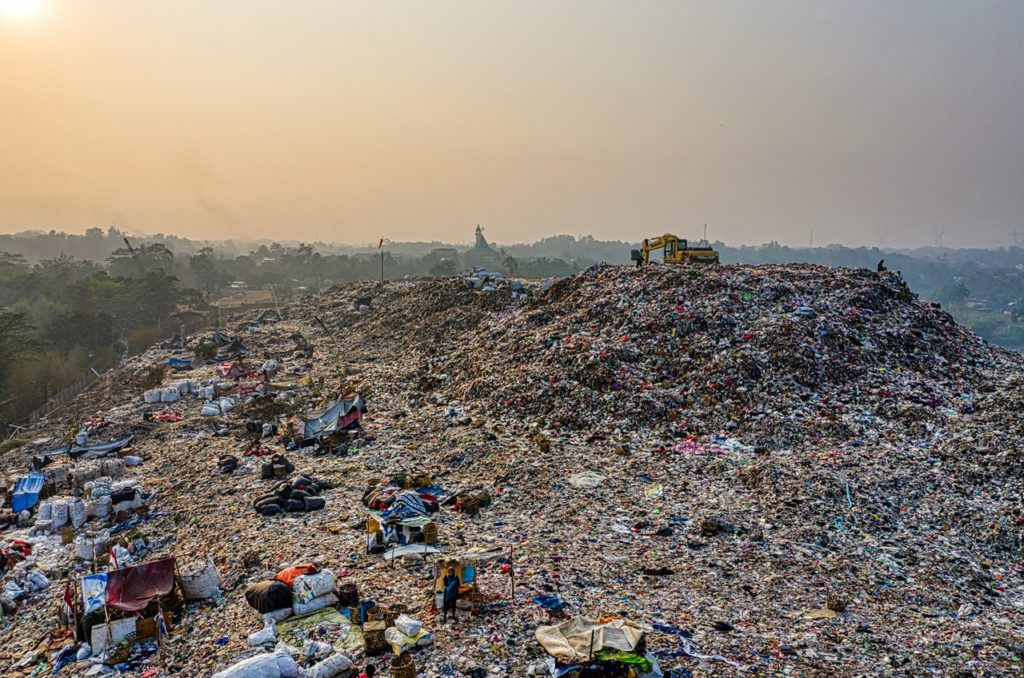We’ve all reached the back of our wardrobe, trying to avoid the dull chore of putting a clothes washer on. And, I think we’ve all got that one item that makes us say, “Fine, I’ll do the wash. I’m not wearing that in public.” In fact, I bet a lot of people have a whole host of clothing that sits unused and unloved. It will never see the light of day until the next big clear out.
Then where does it go, in the bin?
Sustainability problems in fashion are well documented. It’s so well documented that we thought it was time to gather all the facts and stats.
Sustainable fashion is growing in popularity as new generations look to reverse the damaging effects of fast fashion. Below, we’ve dug up fashion facts on clothing waste, manufacturing pollution, and social problems. Plus, a look at the changes already having an effect.
Fashion Waste Facts

- Statistics predict that fashion waste may increase to 148 million tonnes by 2030.
- Less than 1 percent of fashion materials are recycled into new clothing at the end of their life cycle.
- 1 pair of jeans can take as much as 20,000 litres of water to produce.
- Only 15 percent of the population recycle their clothing.
- Eighty billion pieces of clothing are consumed globally every year.
- Clothing production has doubled in the last 15 years despite garments being worn less and discarded much quicker than ever before.
- The U.S. EPA estimates that textile waste accounts for up to 5 percent of landfill space
Fashion Pollution Facts
- The fashion industry accounts for around 8 percent of the world’s greenhouse gas emissions, making it the third highest polluting industry on the planet.
- According to a McKinsey report in 2016, three-fifths of all clothing items end up in landfill or an incinerator, leading to environmental pollution.
- Polyester shirts have twice the carbon footprint of a cotton shirt.
- Textile production is a leading contributor to climate change. The industry produces about 1.2 billion tonnes of carbon dioxide a year— that’s more than both international airlines and maritime shipping combined.
- UK households dispose of a stunning 300 thousand tonnes of clothing every year; 20 percent of which goes to the landfill, while they incinerate the 80 percent.
- Production of textiles uses over 3,500 different chemicals.
- Globally, we use about 11 percent of pesticides and 24 percent of insecticides on cotton crops.
Fashion Industry Social Issues
- Seventy-seven percent of the 71 leading clothing retailers in the UK said there’s a likelihood of modern slavery occurring at some stage in their supply chains.
- The fashion industry is expected to use 35 percent more land by 2030. That’s 115 million hectares more, which could be used for natural ecosystem or growing crops for an expanding human population.
- There are over 40 million people in modern slavery, of which nearly 1 in 4 is a child. 50 percent of slavery victims are in labour slavery, like manufacturing.
- Since 2005, the death toll in Bangladesh alone is 1,800 workers. These fatalities mostly came from factory fires and building collapses.
The Positive Facts

- Younger generations are leading the change, as 60 percent of millennials say they shop more sustainably.
- Nearly 100 percent of textiles and clothing are recyclable.
- The brand Patagonia has been pioneering clothing from recycled plastic since 1993.
- Recycled nylon is incredibly sustainable, requiring only half the manufacturing steps as compared to new chemicals. It reduces energy, water consumption, and pollution, and it heavily reduces waste in landfill and oceans.
- Using recycled cotton can save 2,500 litres of water per t-shirt, as well as reduces waste and strain on new resources.
- You can now recycle car tyres to create amazingly durable and sustainable shoes.
- Planting trees can have an astounding effect on reversing climate change, restoring biodiversity and improving human lives.
Conclusion
The damaging effects of fast fashion and consumerism are clear for all to see. These sustainable fashion facts show that the need for more sustainability in the clothing industry is imperative.
To combat the current waste, pollution, and social problems, we all need to change our mindset. Fashion is not disposable, but rather a long term investment. And, we should consume materials more consciously by reducing, reusing, and recycling.
If you want to learn more about sustainable fashion, check out What is Sustainable Fashion?


 How Sustainable Footwear Can Help Reduce Our Carbon Footprint
How Sustainable Footwear Can Help Reduce Our Carbon Footprint
Leave a Reply